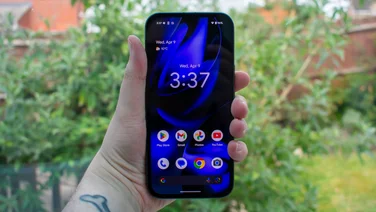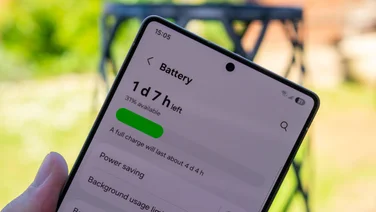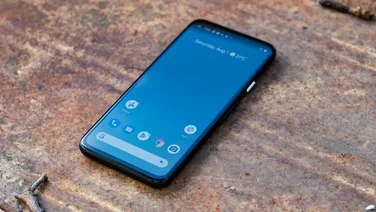To help us provide you with free impartial advice, we may earn a commission if you buy through links on our site. Learn more
- Xiaomi Redmi Note 10 Pro review: What you need to know
- Xiaomi Redmi Note 10 Pro review: Price and competition
- Xiaomi Redmi Note 10 Pro review: Design
- Xiaomi Redmi Note 10 Pro review: Screen
- Xiaomi Redmi Note 10 Pro review: Performance
- Xiaomi Redmi Note 10 Pro review: Camera
- Xiaomi Redmi Note 10 Pro review: Verdict









- Superb screen
- Superb camera
- Just all-round superb
- MIUI Android may not be for all
- No 5G
Its pretty clear that with the Redmi Note 10 Pro, Xiaomi wants that big chunk of the Western market that Huawei ceded when the Chinese giants lost access to Google apps. Written proudly on the Redmi Note 10 Pros box, just under the phones name, is the phrase with easy access to the Google apps you use the most. Ouch, Xiaomi, ouch.Slight digs at the oppositions troubles aside, the Redmi Note 10 Pro is a touch confusing. Its not a suspiciously cheap version of the Xiaomi Mi Note 10, though it does inherit the £459 handsets 108MP camera. The key difference is Redmi (entry-level) vs Mi (flagship) though why Xiaomi kept the rest of the name the same is a mystery to me.
It doesnt really matter. Both phones are great, and the Redmi Note 10 Pro is certainly one of the best handsets you can get in the increasingly competitive sub-£300 bracket.
Xiaomi Redmi Note 10 Pro review: What you need to know
Its an aggressive pitch for the mid-range market from Xiaomi, with the Qualcomm Snapdragon 732G processor paired with 6GB of RAM and a 120Hz screen which, interestingly, is exactly the same specs as another Xiaomi budget favourite, the Poco X3 NFC.









Its an upgrade in a number of ways, though. First up, the screen is an AMOLED jobby rather than IPS, which means infinite contrast and a perfect black level. Second, while both handsets have a quad-camera setup, the Xiaomi Redmi Note 10 Pro has an astonishing 108MP (f/1.9) main sensor. Its not the first phone to go triple figures with its megapixels, but its by far the cheapest.
Xiaomi Redmi Note 10 Pro review: Price and competition
In the UK, the Xiaomi Redmi Note 10 Pro starts at £249. If you double the storage to 128GB, you’re looking at an extra £20 (£269).
That puts it up against some very good handsets, most notably the mid-range champion, Googles Pixel 4a, at £350. Alternatively, there are a couple of 5G options such as the awkwardly named Moto G 5G Plus and Realme X50 5G, both of which sell for £299.
The discount elephant in the room is Xiaomis own Poco X3 NFC, which sells for £199, and its also worth looking into the Moto G9 Plus, which started life at £260 but now sells at around the £200 mark.
Xiaomi Redmi Note 10 Pro review: Design
The Xiaomi Redmi Note 10 Pro gets off to a good start in terms of design. The front is dominated by the 6.56in display, with a thin bezel running all the way around. While the bottom edge is slightly wider, its barely noticeable and doesnt appear as an obvious chin, as is often the case with budget handsets. Theres no notch, either: instead, a pinhole camera sits in the middle of the screen a milimetre from the top border.









Flip it over, and it looks every bit as much a flagship as the latest big-money handsets from Apple or Samsung. The glass back means it does a decent impression of being more expensive, with a back panel that gently curves towards the sides. The camera array looks suitably complex as well, with the 108MP number getting its own fancy silver border, making it look a bit like a recoloured Instagram logo.
Xiaomi keeps things minimalist on the sides, with just a volume rocker and combined power button and fingerprint reader. Theres a headphone jack on the top, and the USB-C charging port lives on the bottom.
The phone also supports both microSD expansion and dual SIM cards at the same time. Thats a good thing as some wont let you expand storage or have a second SIM, while others will make you pick between the two.
Xiaomi Redmi Note 10 Pro review: Screen
On paper, the Xiaomi Redmi Note 10 Pro really pushes the definition of mid-range with its screen. The 6.56in panel uses AMOLED technology (most phones in this bracket go with cheaper IPS) and it has a refresh rate of 120Hz, which makes for smoother operation and theoretically opens the door to 120fps performance in games.









The resolution is 2,400 x 1,080, which means youre getting around 395 pixels per inch significantly better than what youd get on your average laptop screen, even if it falls behind some of the 2K panels on high-end smartphones.
More importantly, this is one of the best screens weve seen in any price bracket, let alone the mid-range. With our colorimeter, we measured an sRGB gamut coverage of 95.4%, from a volume of 97.2% and an almost perfect average Delta E of 1.04. As its an OLED panel, contrast cant be beaten, and while 430cd/m² isnt the brightest screen around, its certainly more than good enough for all but the brightest of sunny days.
The 120Hz refresh rate is actually disabled by default for battery-saving reasons, but can be switched on in the phones display settings.
The boosted refresh rate is pleasant, if somewhat subtle. Menus and app transitions feel significantly smoother, and its certainly more of a pleasure to use, even if its something youre more likely to notice from its absence rather than its presence.









The theoretical gift of triple-figure frame rates for gaming are largely off the table here, though. Thats partly because the Google Play Store doesnt really have many to choose from, and partly because even if it did, the Redmi Note 10 Pros mid-range processor wouldnt be the best vehicle to demo them with, anyway.
Xiaomi Redmi Note 10 Pro review: Performance
On the subject of performance, this isnt something weve been able to test in our normal way, unfortunately. As is often the case with pre-release phones, our usual testing apps GeekBench and GFXBench dont work, so we cant get comparable figures.

Fortunately, the Xiaomi Poco X3 NFC has exactly the same core specifications, so we can assume that performance will be near identical. Heres how it shapes up compared to other phones in and around the same price point:

As you can see, at this price point its all much of a muchness though it is notable that the Google Pixel 4a, our mid-range darling, slips a little behind on the multi-core performance. Its probably not the kind of difference youd notice in day-to-day use, but its worth highlighting given it costs £50 more than the Moto G 5G Plus and £100 more than the Moto G9 Plus. The Poco X3 NFC is the real star of the show here, though, given it sells for £200 and sometimes goes even cheaper in flash sales.
The GFXBench charts, with our surrogate Poco X3 NFC playing the part of the Redmi Note 10 Pro, tell a similar story. The yellow lines are the ones to pay attention to here, as different resolutions make red line comparisons potentially misleading. Here, the Moto G 5G pulls well ahead, and although its not included (once again, the tests failed), it has similar internals to the £299 Realme X50 5G. Notably, all handsets beat the Pixel 4a on 3D performance, even if its not by a massive amount.










The Xiaomi Redmi Note 10 Pro has a large 5,020mAh battery, which provides very good battery life although its not markedly different from any of its main rivals here, and in fact falls on the lower end of the spectrum:
That said, anybody saying over 17 hours of battery life is a bad result needs their head examined, frankly.
Xiaomi Redmi Note 10 Pro review: Camera
Along with the high-spec screen, the camera array also sets the Xiaomi Redmi Note 10 Pro aside from its rivals. A 108MP camera is unheard of at this price, and pretty rare all round. For comparisons sake, weve seen such high megapixel counts in the Samsung Galaxy S20 Ultra, S21 Ultra and Note 20 Ultra (all £1,000+ at launch), as well as Xiaomis own Mi Note 10 which sells for £459. However you paint it, squeezing this component into a sub-£300 handset is a triumph.









Before I get on to how it fares, I should add that its not the only part of the Redmi Note 10 Pros photographic arsenal. The 108MP (f/1.9) main camera is supported by three other sensors: an 8MP (f/2.2) ultrawide lens, a 5MP (f/2.4) macro camera and a 2MP (f/2.4) depth sensor.

So how does the 108MP camera fare? Pretty brilliantly. Before sending the Redmi Note 10 Pro on to me, our mobile technology editor Nathan Spendelow captured some comparison shots with the S21 Ultra from his balcony. As you can see, while the S21 Ultra has a slight edge (especially on the brickwork and pavement), its certainly not what youd call £850 better, and theres still a lot of detail even when zoomed to extreme levels:

But do you really need to use the full 108MP resolution, when each picture weighs in at 16MB+? Heres a shot using the default 4:3 12MP setting, and as you can see the picture quality is still excellent in well-lit conditions.

Crucially, when compared to a 108MP shot taken at the same time, theres not that big a difference in quality, even when zoomed in.

At dusk in my garden dark enough for nearby streetlights to have turned on, but not dark enough to need flash the Xiaomi once again performed superbly, with punchy images, plenty of detail and very little noise.

You have to zoom in pretty close to begin to see some light smearing, and even then its not hugely pronounced.

The front-facing camera is also very good and takes the most flattering selfies Ive seen in a while, feeling less like a mug shot than my recent efforts. The default setting (middle) has some light beautification enabled, but you can see what its like turned off (left) and maxed out (right) if you play around with the settings.
Video performance is solid, if not spectacular. It only records footage at 1080p, with no option to change that to boost the frame rate, which remains locked at 30fps. It does, however, have optical image stablisation, and it stayed solid no matter how much I shook the camera.
Xiaomi Redmi Note 10 Pro review: Verdict
Im having a hard time thinking of any serious drawbacks to the Xiaomi Redmi Note 10 Pro, unless you have an aversion to the companys cartoony MIUI Android skin. Yes, we dont have a UK price yet, but assuming its under £300 as it should be given the US RRP is $279 then its a fantastic pick with decent performance, an incredible screen and superb photographic abilities.









The only fly in the ointment is the fact that Xiaomis Poco X3 NFC sells for at least £100 cheaper, and it has exactly the same processor and RAM. I think, however, that theres enough here to justify the extra expenditure thanks to its wonderful camera and silky smooth 120Hz AMOLED screen.
If youre concerned about the lack of 5G, you may fancy the Motorola Moto G 5G Plus for around the same price, and it does offer slightly better in gaming performance to boot albeit with a cheaper feeling build, and just a 90Hz screen.
If 5G isnt a necessity, however, then the Xiaomi Redmi Note 10 Pro is definitely the phone for you.






